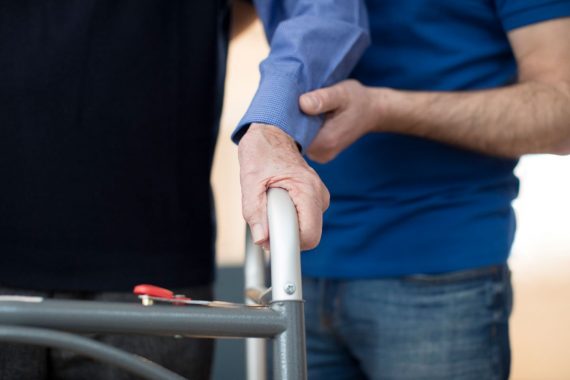A study has found a sharp rise in the rate of frailty in older adults in England that coincided with austerity and cuts to public spending.
Analysis of data from a large study on ageing that ran between 2002 and 2018 found the rate of frailty in the over-85s increased 50% faster every year from 2012 compared with the previous eight years.
This decline in mental and physical resilience to illness and injury should be considered should any new austerity measures be introduced, the researchers from the University of Edinburgh concluded.
It follows previous research which found a stall in the growth of life expectancy related to austerity politics introduced after the financial crash in 2008.
The latest study looked at the frailty index of 16,410 people enrolled in the English Longitudinal Study of Ageing and round frailty scores increased more rapidly with age after austerity politics came in.
Writing in PLOS ONE, they said the pattern was seen for all population groups, across genders and socioeconomic groups but was particularly pronounced in the oldest participants.
Among the poorest women aged over 85, the frailty index increased an average of 0.013 per year between 2002 to 2010 but increased by 0.021 per year, two thirds higher, during 2012 to 2018, they found.
For the oldest groups, the improvements in frailty that had been seen in the 2000s were lost entirely, and they were frailer than those of the same age living in the prior decade, they added.
It suggests that increased frailty may be one mechanism through which public spending reductions have negative impacts on health and mortality, particularly among the oldest people in society.
Study lead Dr Carys Pugh said: ‘A key implication of this research should be a recognition that public spending reductions likely have negative impacts on health and, in turn, mortality, particularly amongst the oldest in society.
‘Frailty normally increases with age but as we emerge from the pandemic and into a cost of living crisis, any new austerity measures need careful consideration given their potential impact on long-term health, especially among the eldest who appear particularly vulnerable.’
Professor Adam Gordon, president of the British Geriatrics Society, said frontline healthcare professionals could see every day how social isolation, the inability to get out, to exercise and to eat well can impact upon the health and wellbeing of older patients.
‘Older people with frailty use health and social care services more than any other population group. Despite this, services are not designed around the needs of this user group.’
They are more likely to face long waits in emergency departments and are more likely to get stuck in hospital because of a lack of care available in the community, he added. This has a knock-on effect on the whole system leading to long waits for both emergency and elective care.
‘In addition to the suffering experienced, these examples illustrate the longer-term costs of austerity,’ he said.
‘As we approach an election, it is essential that all major political parties have clear strategies for investing in prevention, care and support services, not just for older people who already live with frailty, but for those at risk of developing it in the future.’
Pulse July survey
Take our July 2025 survey to potentially win £1.000 worth of tokens












